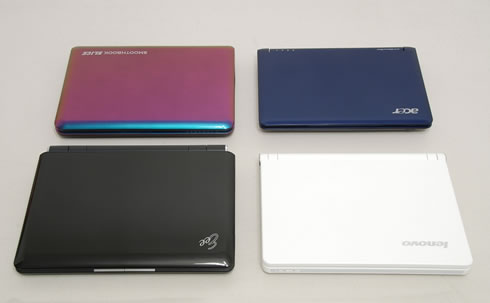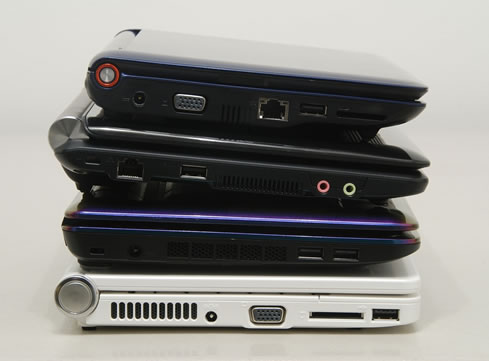It can't be argued that 2008 was the year of the netbook. Asus is credited with officially bringing the first netbook to market last year with their Eee PC**, but as many first adopters will tell you, companies rarely "get it right" on their first at bat and the Eee PC was no different.
Although the device was priced right, features like the 7" widescreen display only capable of running at a resolution of 800 x 480, low capacity storage and a custom Linux-based OS left many users wanting more. Let's face it - a Linux OS may be faster and more responsive on a netbook that lacks sheer processing power, but it simply scares away mainstream consumers who only know Microsoft products.
A big second wave of netbooks arrived in mid-2008 and as expected, improvements were made all around. These netbooks offered larger screens capable of higher resolutions, better storage mediums (either SSD or traditional hard drives), and the option to have Windows XP pre-installed.

Intel's Atom mobile processor, released back in June, has become the power plant of choice for netbook manufacturers. The Atom N270, code-named Diamondville, is a single core processor built using the 45nm process. With a TDP of only 2.5W, the Atom generates very little heat when compared to today's modern desktop processors.
Of course, the Achilles' heel of the Atom processor is that it lacks the "Oomph" that we take for granted in our desktops and notebooks. One must keep in mind that the netbook is designed with minimalist needs in mind - Internet surfing, e-mailing, word processing, chatting and watching the occasional online video (SD quality). Anything beyond these tasks, including but not limited to video editing, modern gaming, or watching HD video content, and the Atom is quickly outclassed and unable to keep pace.
| Lenovo Ideapad S10 | Asus Eee 904HA | Acer Aspire One | SC Slice | |
| CPU | Intel Atom 1.6GHz | Intel Atom 1.6GHz | Intel Atom 1.6GHz | Intel Atom 1.6GHz |
| Screen Size | 10" | 8.9" | 8.9" | 10" |
|
Memory (max) |
1GB (1.5GB) | 1GB (2GB) | 1GB (1.5GB) | 1GB (2GB) |
| USB Ports | 2 | 3 | 3 | 3 |
| Hard Drive | 160GB | 160GB | 160GB | 120GB |
| Battery (optional) | 3-cell (6-cell) | 6-cell | 3-cell (6-cell) | 3-cell (6-cell) |
| Price | $399 | $350 | $380 | $500 |
But perhaps the most exciting aspect of the netbook is how quickly it is gaining popularity with consumers. Manufacturers are jumping on the bandwagon and producing their own brand of netbook, mixing and matching what they believe to be the best combination of features and specifications. A more competitive marketplace garners lower prices and greater options for the consumer, and who doesn't love that?
Today we will be taking a look at four popular netbooks from four different manufacturers: Smooth Creations, Lenovo, Acer and Asus. While all of the netbooks here today share similar hardware specs, each is vastly different and unique in its own right. Built quality, screen size, keyboard layout and touchpad implementation are only a few of the many aspects that will be covered in-depth.

** Purists will tell you the term 'netbook' goes back to 1999 when a company called Psion introduced their 'Netbook' computer derived from sub-notebooks offered at the time. In realistic terms, however, Asus single-handedly brought the netbook form factor to the mainstream market with the Eee in 2007.